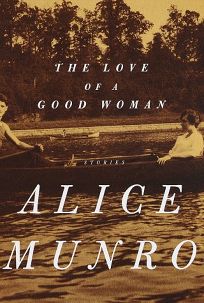
My Young Life
by Frederic Tuten
One late snowy afternoon we got married in Brooklyn in a justice of the peace's no-frills office. The wedding music cost five dollars extra.
Simona said, "Thank you, but we will not need music."
"I like you kids," the justice said. "I'll throw it in free."
We said our "I do's" to the accompaniment of Dvorak's New World Symphony.
We had gone to Brooklyn by subway and returned to Manhattan the same unceremonious way. We stayed happy for several years.
Fred Tuten is an acclaimed avant-garde novelist (and a former professor of mine), author of 5 novels, including Tintin in the New World and The Adventures of Mao on the Long March. This is his deceptively sweet and romantic memoir, narrating the story (as the title tells us) of his youth. He grew up in dire poverty in the Bronx, was abandoned by his irresponsible father to live with his depressive mother, barely made his way through high school and City College. Along the way he falls in love with sex, romance, art and literature - though not necessarily in that order.
The book is constructed around short snippets of narrative, some that string together to tell a longer chapter of his life, some that tell of one, brief episode. While he is serious about his poverty and portrays himself as a serious, almost frantic young man, the tone here is generally light. Tuten is bracingly honest about his own youthful insecurity and fecklessness. He is more than slightly pretentious. For example, as a relatively young teenager he decides to become a painter and move to Paris. His model is Van Gogh and he spends pages dreaming of his life as a struggling artist in Paris, a far more romantic situation than being a struggling non-artist in the Bronx, which is what he is. He spends several years of his adolescence planning to become an artist, but almost no time painting. He quickly drops out of the one art class he takes and while he curses himself for his procrastination and fear of failure, he does not change.
Until, after dropping out of high school and then returning, he decides to be a writer. He spends several years imagining himself as a politically committed writer - a Hemingway or an Orwell, his destination now Mexico or the hills of Cuba, where Castro is waging revolution. He does almost no writing during this period, but weaves an even more pretentious and frantic portrait of a young man in search of something to make his life meaningful. He is just as feckless and just as frantic - he has simply changed the medium he is not practicing.
The portrait, and many of the incidents narrated, is sweetly humorous. We root for young Fred, even if what we are rooting for is for him to get off his ass and do something. Spoiler alert: he doesn't. The book ends with the marriage scene quoted above and Fred is 25, working in a bookstore and thinking about a job with the welfare department. He has dropped out and then re-enrolled in high school, flunked out and then re-enrolled in City College, and failed out of graduate school. He has published one play in a City College literary magazine (which is deemed obscene and almost gets him thrown out again). He has had several dozen sexual experiences, most of them masterbatory. His approach to women, repeated with virtually every women in the book, is to extoll their beauty, worship their sexual appeal and convince himself he is in love with them.
The romance and comedy are satisfying, but even more satisfying is the way Tuten undercuts this sweet innocence with little glimpses into the future. These come in footnotes that are oddly placed - often several pages after the person they refer too. In these he fast forwards to tell the latter details of relationships of his youth and virtually all of these carry dark undertones. His estranged father dies, his estranged mother dies, he narrates how he cavalierly lost touch with close friends. Along the way he slips in details of his novels, of time he spends in his beloved Paris and of more than one failed marriage. So we don't get to see him lose his innocence, but we are constantly reminded that it is lost.
I have a tendency to romanticize other people's youthful New York experiences - my own apparently not having been romantic enough. Tuten had me wishing I had lived in the Bronx of the late 1940's even while it was clear that he hated it. He made me wish I had gone to CCNY in the 1950's (instead of the 1980s), believing that everything about both New York and youth was better than. And the portrait that emerges in the footnotes, of a solitary, successful and slightly acerbic adult reinforces that belief.







